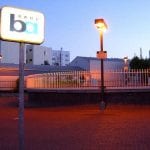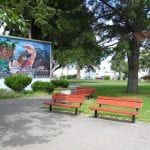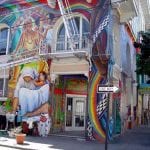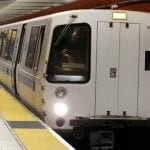Urban Ecology’s Community Design Program is a cutting-edge example of how a sustainable vision embraces both social justice and environmental health in our cities. In collaboration with grassroots groups in low-income neighborhoods, Urban Ecology creates plans that improve a neighborhood’s environmental health, stabilize the local economy, and achieve a more equitable distribution of resources.
Through this program, Urban Ecology has assisted community members in East Palo Alto, Oakland, the Mission District of San Francisco, and Visitacion Valley as they examine their neighborhood’s challenges, resources, and opportunities, and determine their future.
Land use policy underlies the shape of the parks, streets, buildings, and homes that make up our communities. In California, land use planning is the tool used by communities to make decisions about housing density, transportation investments, economic development, and urban design. However, in low-income neighborhoods throughout the Bay Area, land use decisions are frequently not made by local residents. Instead, these communities are often bypassed by planning and investment, or they are chosen as sites for land uses that are unwanted by wealthier neighborhoods, such as waste incinerators or heavy manufacturing. The failure to conduct community-based land use planning in low-income neighborhoods has contributed to the deterioration of public parks, the struggle to keep local businesses and jobs, and the challenge of redeveloping land and buildings contaminated by toxic substances.
Urban Ecology’s community planning projects are initiated by an invitation from a community group who is seeking change in their neighborhood. We research and discuss local circumstances with the community-based organization, looking for the following characteristics:
Community
Where cultural, ethnic and social diversity will be enhanced and celebrated, and where the community members clearly have a strong connection to place and its history.
Involvement
Where a grassroots element is present, and where stakeholders have demonstrated a willingness to act upon the greater well-being of the community.
Social Justice
Where the community has historically been shut out from effective involvement in the decision-making process, and where intervention could reverse the disenfranchisement of that community over its local environment.
Feasibility
Where the particular circumstances of the community will allow a reasonable time frame for solutions to develop, or a strong likelihood that a clear understanding of the situation will allow additional positive steps to be taken.
Impact
Where future developments or strategies will engender positive social, cultural and environmental benefits to local communities, and where tangible results are long-lasting and significant.
Context
Where the design of existing local and regional physical characteristics, such as natural habitat, infrastructure, adjacent neighborhoods, urban centers and public open spaces will be enhanced for the benefit of the local communities and the greater region.
The Neighborhood Plans that we produce are documents that establish physical, environmental, and socioeconomic development guidelines. Within the Neighborhood Plan, we usually address:
Community Space
Physical community space, including parks, plazas, open space, and gardens that reflect the community’s social, cultural and historical characteristics.
Streets
Calmer neighborhood streets and sidewalks that prioritize pedestrians, bicycles, and public transportation.
The Built Fabric
The design of new and reused public and private buildings to serve the neighborhood needs and establish a sense of place.
Economic Development
The design of building fronts and sidewalks to assist local businesses, and design and policy recommendations for increasing residential density to establish a customer base.
The Natural Environment
Design of all the elements above that incorporates an ecological sensibility. Design and policy recommendations that support natural systems, such as local food production, the use of renewable energy, and recycling.





